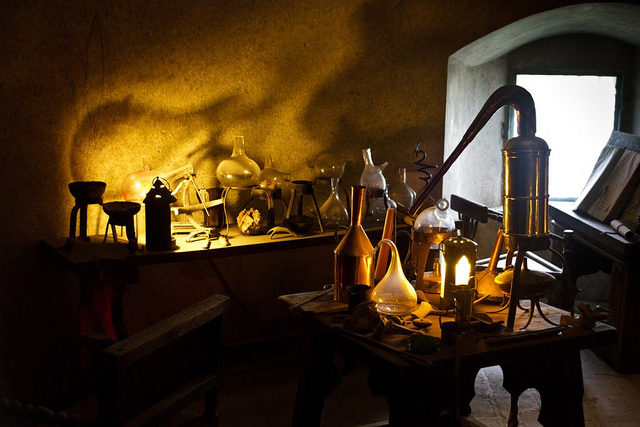Inside an Edit: Non-Fiction Structural Changes

Paul Engle’s decision to write Conciatore has a weird history. He became interested in a seventeenth century priest, Antonio Neri, who is often credited as the author of an ancient text called L'Arte Vetraria—one of the first and best texts about the art of glassblowing.
Engle believed Neri had written the book, and set out to prove it.
Conciatore was meant to present new information to glass historians. By the time Engle finished the book, he realized there was enough material for a biography, but that seemed like another project.
“I printed a dozen copies in soft cover and sent them to friends for comment. The results were less than stellar; there seemed to be agreement that I had an interesting story to tell, but that the form of the book was a total disaster.
I worked hard to try to address their comments, but it amounted to rearranging deck chairs on the Titanic.
My editor started by making it very clear that what I had handed him was indeed a biography – albeit completely out of order.”
Here were the editor, Dan Crissman’s, thoughts:
“When I looked at all the research Paul Engle had done and what he'd found out about Neri, his focus seemed too narrow and the structure didn't feel right. Engle was introducing details about Neri's life and work out of chronological order, referencing things the reader didn't yet know about him and using very technical terms about glassblowing. As it turns out, Neri had lived a pretty interesting life (he was really into alchemy, despite being a devout priest), so I suggested turning the book into more of a straight biography."

From Crissman’s editorial memo:
"The current construction of the chapters makes perfect sense in terms of following your own research and laying bare the case you make for this Priest Neri being 'our Neri.' On the one hand, this book is an academic treatise, and in that sense the current structure works best. But as a straight biography that speaks to a general readership, I worry that in certain places readers will lose the connecting thread—particularly readers who aren’t already familiar with L’Arte Vetraria, glassmaking, or alchemy. For these readers, I believe it’s important to establish right from the start why Neri’s work is so famous and why modern readers should want to know more about his life. And after that—and this is the most important point for me—the trajectory of Neri’s life should act as the framing structure for the rest of the book."
Crissman laid out a chapter-by-chapter restructuring plan, to which Engle responded:
"I am excited about your restructuring plan, although I must admit that I really cannot now envision how it will actually read in the end. I can tell you that your criticisms have a spooky similarity to what I heard from ten readers to whom I sent an early draft in April. I am relieved that not only do your comments echo theirs, but that you have a concrete, constructive solution."
Engle went on to revise the book according to the restructuring plan. The results were surprising.
“My editor assured me that it could be made right through a rearrangement of text, with very little rewriting. To my amazement that turned out to be true.
As I made the suggested changes, what emerged was a clear exposition of the arc of Neri's life. The opening now gives readers an overview of why Neri is interesting and answers that all important question "why should I read this book?"
The chapters now follow a logical sequence; Dan somehow managed to put things in order and at the same time paced the story to keep the momentum running through to the last page.
One of my favorite comments about the book so far is by a retired glass engraver at Steuben. He says that after unwrapping it:
"I opened the book and did not put it down for four hours.”
As an author, it does not get any better than that.
The book is being received well by historians and general audiences alike; there are even a few blush-worthy reviews starting to appear on Goodreads … this week I am scheduled to address The American Scientific Glassblowers Society.
What started as a calculated business decision to go with New York Book Editors has turned into a heartfelt debt of gratitude to you and Dan for taking such good care of me.”
Paul Engle’s fascinating book, Conciatore, can be found on Amazon.
If you have any questions about the edit, let us know in the comments.




